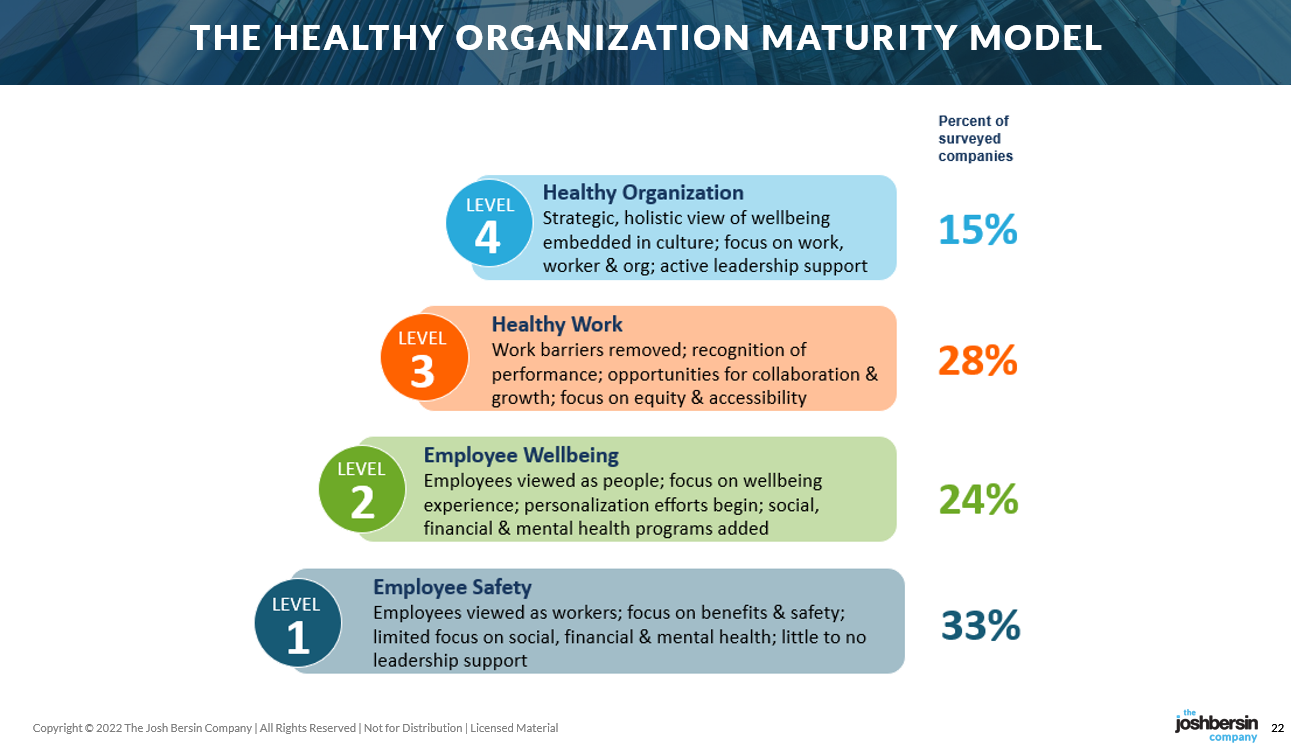
Wellbeing
Employee health, safety, and “wellbeing” have been around for 100+ years. During the Industrial Revolution, child labor laws and factory inspections kept workers safe. This was followed by decades of evolving legislation and the emergence of employee assistance programs (EAPs) to prioritize worker health. In the 1980s, organizations began to broaden their definition of employee health into the term “wellness.” Fitness programs emerged, with yoga classes and nutrition initiatives added to most company benefits portfolios. In the early 2000s, the definition of wellness to wellbeing evolved again. Today, companies view employee wellbeing as a holistic constellation of employee health that includes physical health, mental wellbeing, social relationships, financial fitness, and even career health.
Employee wellbeing is indeed a critical priority for companies, but our research shows it is not enough to deliver holistic care TO the workforce. Healthy organizations are indeed focused on employee wellbeing – foster a workforce of healthy people – but they also examine their business practices to cultivate healthy work and healthy culture as well.
Here is the Josh Bersin Company Healthy Organization maturity model, developed through extensive research. As you can see it highlights the importance of management, culture, and leadership in addition to work-life balance and other health issues.

Related Course
The New World of Wellbeing Course explores the evolution of employee wellbeing and dives into the key areas that make up a holistic wellbeing program: health and safety at work, mental resilience, physical health, financial fitness, and family and community. Featuring global stories and practical examples, this course helps HR practitioners and leaders focus on the most urgent and systemic wellbeing strategies that drive value.
Discover The New World of Wellbeing

